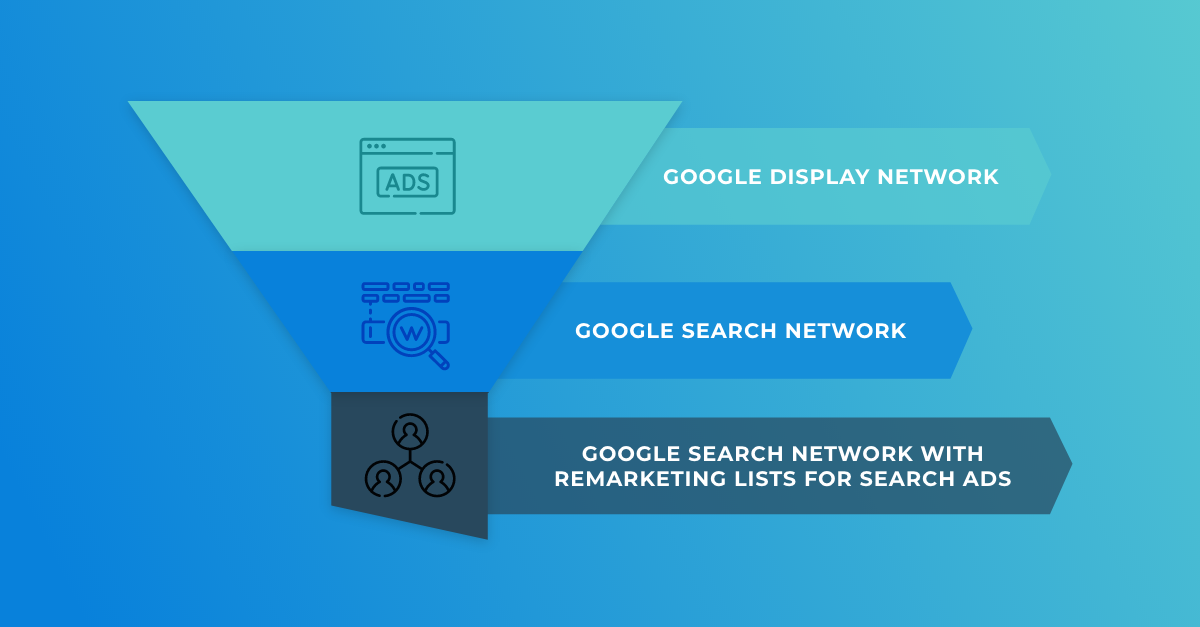Google Ads dominates the paid search advertising terrain. (Bing who?) In fact, in our recent “Paid Digital Advertising in the Real World” report, 93% of tech marketers surveyed indicated that they advertise on the Google Search Network—what we consider to be pay-per-click (PPC)—and 40% stated they utilize the Google Display Network.
As Google's algorithms that power its suite of platforms continue to evolve and mature, so has the company's philosophy of how marketers utilize its services. In one of Kiwi's recent blog posts, I talked about the MUM update to Google Search and how Google's algorithm will soon change the entire landscape of SEO. Currently, we're observing the same patterns with Google Ads.
Specifically, Google has made significant changes over the past few years, all of which center around one idea: trusting Google's algorithm to work in your best interest.
In other words, Google wants marketers to relinquish control over their paid advertisements and instead trust its algorithm to deliver the results marketers desire.
If you’re a marketer who enjoys having control over all aspects of paid advertising campaigns, Google telling you to trust its algorithms with your money can be a bit much to swallow! However, Google is not giving tech marketers much of a choice…so, let’s dive into those changes.
Leveraging Search and Display In-Tandem
Traditionally, we've observed tech marketers take a siloed approach to the Google Display and Search Networks. In other words, marketers' campaigns would be self-contained to one of these platforms and would never cross over the "line" dividing both networks. Now, with the updates that Google has made to Google Ads, the company recommends a different approach: leveraging both the Google Display and Search Networks together.
At a high level, Google's recommended flow with both platforms is as follows:
- Tech marketers can create ads on the Google Display Network to drive awareness of their brands or products. These ads target users within a broad audience. This is the outermost layer.
- Moving one layer inward, tech marketers can write ads on the Google Search Network that appear after a user sees one of the Google Display ads from above. In essence, the display ad plants the idea to search on Google Search.
- Leverage Remarketing Lists for Search Ads (RLSA) to remarket to visitors who visit your website and interact with a search ad from above. Instead of remarketing to all website visitors (traditionally done on the Google Display Network), RLSA allows tech marketers to target users who interacted with down-funnel ads in two ways.

With this approach, tech marketers can cast a wider net on the Google Display Network, which costs less than advertising on the Google Search Network. Then, on the Google Search Network, tech marketers can efficiently use their advertising dollars on prospects with a higher likelihood of conversion and track a true ROI back to their campaigns!
In summary, the Google Display Network is best for top-of-funnel, brand awareness campaigns. Conversely, the Google Search Network excels with down-funnel campaigns. Plus, since advertising with paid search is more expensive, it's best to use these dollars on ads that have a higher likelihood of generating direct revenue for your business! Harnessing both networks together in one advertising endeavor can yield meaningful results for tech marketers.
Responsive Ads: The Next Frontier
Historically, with the Google Display Network, tech marketers would upload single image files of varying sizes (aka "static image ads"). A few years ago, Google rolled out responsive display ads, where marketers upload the components of a display ad (logo, headlines, images, etc.), and Google puts together an ad to fit any space available on a webpage. Google recommends that advertisers use responsive display ads since it offers the most chances for showing ads. However, in our experience, it's beneficial to utilize both responsive image ads and static image ads with Google Display campaigns.
Recently, Google has made the same changes to the Google Search Network. Traditionally, marketers would upload very specific keywords—exact match, some phrase match, and perhaps some broad match modifiers—and then base the expanded text ads and landing pages around these keywords. In 2020, Google removed the broad match modifier keyword type. This past summer, Google announced that it would deprecate expanded text ads at the end of June 2022.
Where does this leave marketers? Google highly encourages that marketers use broad match keywords in paid search campaigns. Google argues that its algorithm learns which keywords to target based on those that generate the most conversions and additions to negative keyword lists. Additionally, Google is transitioning all marketers to use responsive search ads. With a typical expanded text ad, marketers fill in the following elements:
- Three headlines, each less than 30 characters in length
- Two descriptions, each less than 90 characters in length
- A final URL (i.e., a landing page)
With responsive search ads, marketers upload more options for headlines and descriptions. Then, the algorithm puts together the best combination of headlines and descriptions for the specific user. Specifically, marketers upload the following:
- Up to 15 headlines, each less than 30 characters in length
- Up to four descriptions, each less than 90 characters in length
- A final URL (i.e., a landing page)
The upside to responsive search ads is that Google serves the most relevant ad to users, heightening the chance for a clickthrough and eventual conversion. The downside is that marketers have less control over the combination of headlines and descriptions that Google serves. With responsive search ads, we find it best to create headlines that use specific keywords and then produce random pairings to check for redundancy.
So, should you trust Google’s algorithm with your PPC campaigns? At the end of the day, you’re not really going to have a choice going forward. The good news is that while these changes force tech marketers to relinquish some control over their campaigns, they offer the opportunity to leverage Google's algorithm to create highly-relevant, targeted advertisements to the right prospect with the best chance of a conversion.






